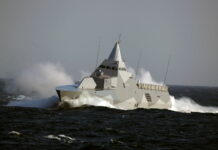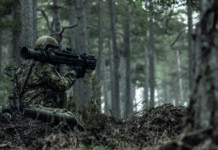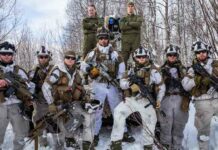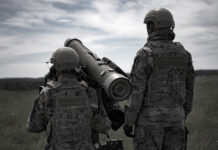Saab’s Barracuda business launched a new type of camouflage screen on 5 September 2023 that allows soldiers protected by it to still use their radio frequency (RF) devices.
The new system, known as the Ultra-Lightweight Camouflage Screen – Frequency Selected Surface (ULCAS-FSS), is printed with material that acts as a low-pass filter, allowing selected low radio and GPS frequencies (roughly 0-0.5 and 1.2-1.6 GHz respectively) pass either way through the camouflage netting while protecting against the higher frequencies of electromagnetic waves used by radar systems (typically from 8-12 GHz).
Johan Jersblad, senior development engineer with Saab’s Barracuda business, additionally noted on a call with journalists on 4 September that the company can effectively tune which frequencies to let through the camouflage netting, creating bespoke solutions based on customer requirements.
Weak radio frequencies and GPS signals have been a problem with any camouflage screening that protects against radar, forcing soldiers to leave their camouflaged locations in order to communicate effectively, whereas ULCAS-FSS obviates the need to do this.
Meanwhile, Saab has upgraded its soldier system camouflage and is also working on sustainable camouflage solutions.

The company’s soldier system camouflage, which hides a soldier’s thermal as well as visual signature and is available in customised colours and patterns, has received improvements to both its thermal coating and smart design features. The latter enhances its usability, optimising how it can be used individually or connected together, for example to form a tent.
In terms of its work on sustainable camouflage, Saab has two main research streams: one looking at the potential use of recycled polyester, of which the first prototype will be produced very soon this year; and another investigating the use of alternative biodegradable fibres, such as jute and hemp.
Jersblad noted Saab’s sustainability efforts could take camouflage material back to jute, after having replaced it some 50 years ago with polyester.
Saab will, of course, be showcasing these latest developments at this year’s DSEI defence exhibition in London, held from 12-15 September, and will also be displaying an Oshkosh Joint Light Tactical Vehicle fitted with its Mobile Camouflage System. This acts as a second skin, said Jersblad, and camouflages the vehicle without having any effect on its functionality.
Peter Felstead












